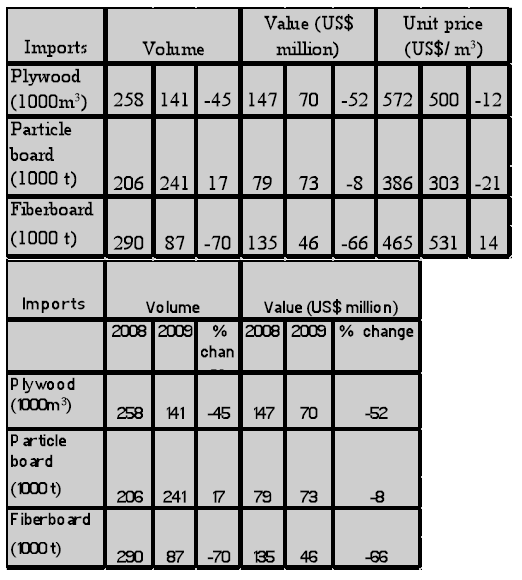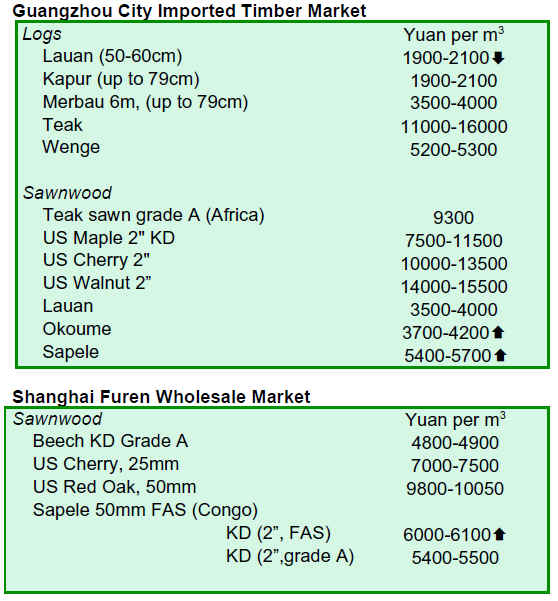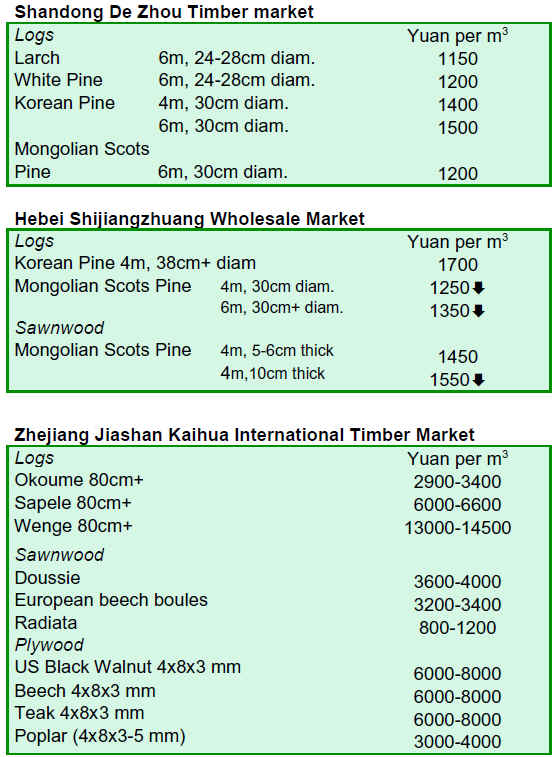US Dollar Exchange Rates of 14th January 2010
China Yuan 6.8270
Report from China
GDP Estimates
According to forecasts released by the Chinese Academy
of Social Sciences, Chinaí»s economy is expected to be
healthy in 2010 with a growth in of GDP 9 percent.
Investments in fixed assets in 2009 are estimated at Yuan
22.74 trillion representing a growth of around 32 percent,
the highest in last sixteen years.
In terms of consumption, the 2010 sales of consumer
goods are forecast to be close to Yuan 15 trillion up from
the 12.5 trillion in 2009. Much of this growth is said to
stem from grain subsidies and home appliances subsidies
made to rural families.
Both imports and exports fell in first ten months of 2009.
It is forecast that, as the global economy recovers, Chinaí»s
imports and exports will exceed 18 percent and 17 percent
respectively in 2010.
According to the Director of Social Research Institute of
the Chinese Academy of Social Science the objective of
building an affluent society across China will be realised
ahead of time.
Climate Change
Before the climate change conference in Copenhagen, Mr.
Jia Zhibang, Administrator of State Forestry
Administration (SFA), told media correspondents that to
deal with climate change Chinaí»s forestry sector will be
one of the key development areas.
The SFA has adopted a series of measures in this regard.
These include the setting up of a unit to manage work on
carbon sequestration, construction of wood energy forests
in cooperation with state owned enterprises and the
implementation of í«carbon storageí» forest plantations in
Guangxi Autonomous Region in cooperation with the
World Bank. Recently, the SFA prepared its í░Forestry
action plan to deal with climate changeí▒.
Mr. Jia Zhibang said that by carrying out tree planting and
strengthening forest management, Chinaí»s forests can
absorb some 5 billion tons of carbon dioxide. At the recent
climate change conference the Chinese Government
undertook to increase its forest area by 40 million ha. by
2020.
Custom tariffs
Since joining the WTO, China has progressively adjusted
customs regime. The general custom tariff has been
reduced from 15.3 percent in 2002 to 9.8% in 2009. The
average tariff of agricultural products dropped from 18.8
percent to 15.2 percent, while the average tariff on
industrial goods fell from 14.7 percent to 8.9 percent. By
2010, China will completely fulfill its obligations to WTO
in tariff reduction.
Survey in Shuifenhe
A survey of 70 large wood processing enterprises by the
Bank of China revealed that, starting in August of 2009,
export orders have risen significantly. Statistics showed
that production in about 60 percent of the enterprises
recovered to the level before the global financial crisis.
Compared with the worst period in 2009, current orders in
30 percent of the enterprises rose considerably and in
some by 100 percent. A gradual recovery was reported by
20 percent of the enterprises; 30 percent said orders had
increased from 30-100 percent while another 40 percent
said that orders had recovered or even exceeded previous
levels.
During the worst period in the financial crisis, 30 percent
of the enterprises were closed and the others were
operating at below 20 percent of their capacity.
The survey also reported that prices of export products
remain basically unchanged, 30 percent of enterprises
indicated a 3-5 percent decrease and 70 percent reported a
3.5 percent increase. In terms of profits, 30 percent of
enterprises reported no obvious change, 20 percent
indicated a slight increase.
Russian Sawnwood
Statistics from Shuifenhe Customs show that a total of
over 0.3 million cubic metres of sawnwood were imported
in first ten months of 2009, valued at US$62.2 million, up
201 percent and 162 percent respectively over the same
period of last year.
With this significant increase in imports, Shuifenhe Port
has become one of the largest distribution centres for
sawnwood in China. Currently, sawnwood used in Dalian,
Qingdao, Guangzhou, Shanghai and Beijing are mainly via
this port.
It is understood that some of the wood processing
enterprises in the city have adjusted their industrial
strategies in the Far East and Siberia Areas of Russia.
Previously they imported logs from these areas but now
they principally import lumber and semi processed
products. Some of the larger wood enterprises, such as
Longjiang Commerce, Sanxia Wood Industry and Youyi
Wood Industry, have set up their own wood processing
mills in Russia and laid the foundation for imports of
sawnwood.
Chinaí»s imports and exports of wood-based panels in first
ten months of 2009 were affected by the weak global
economy as can be seen from the following tables



íí
|